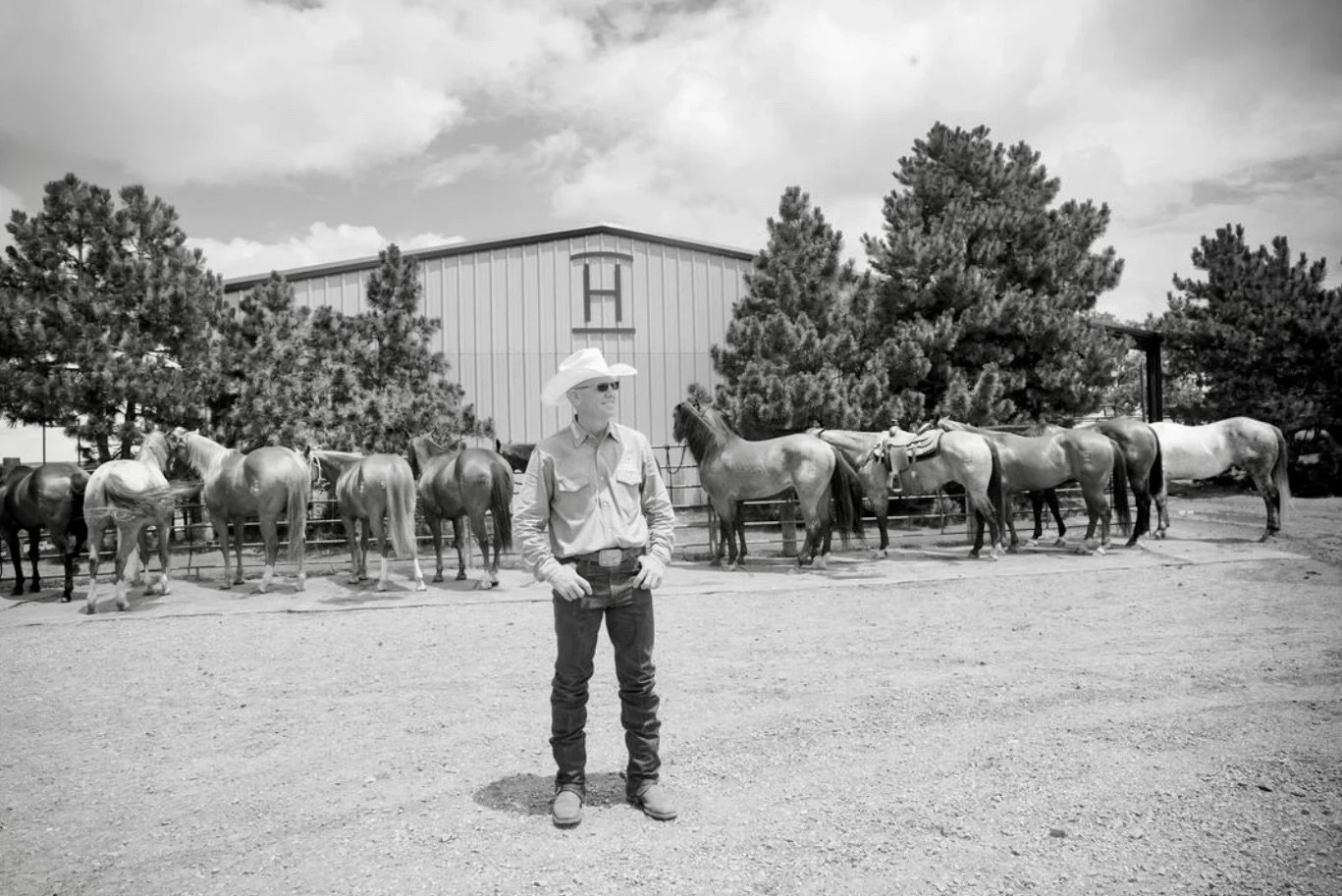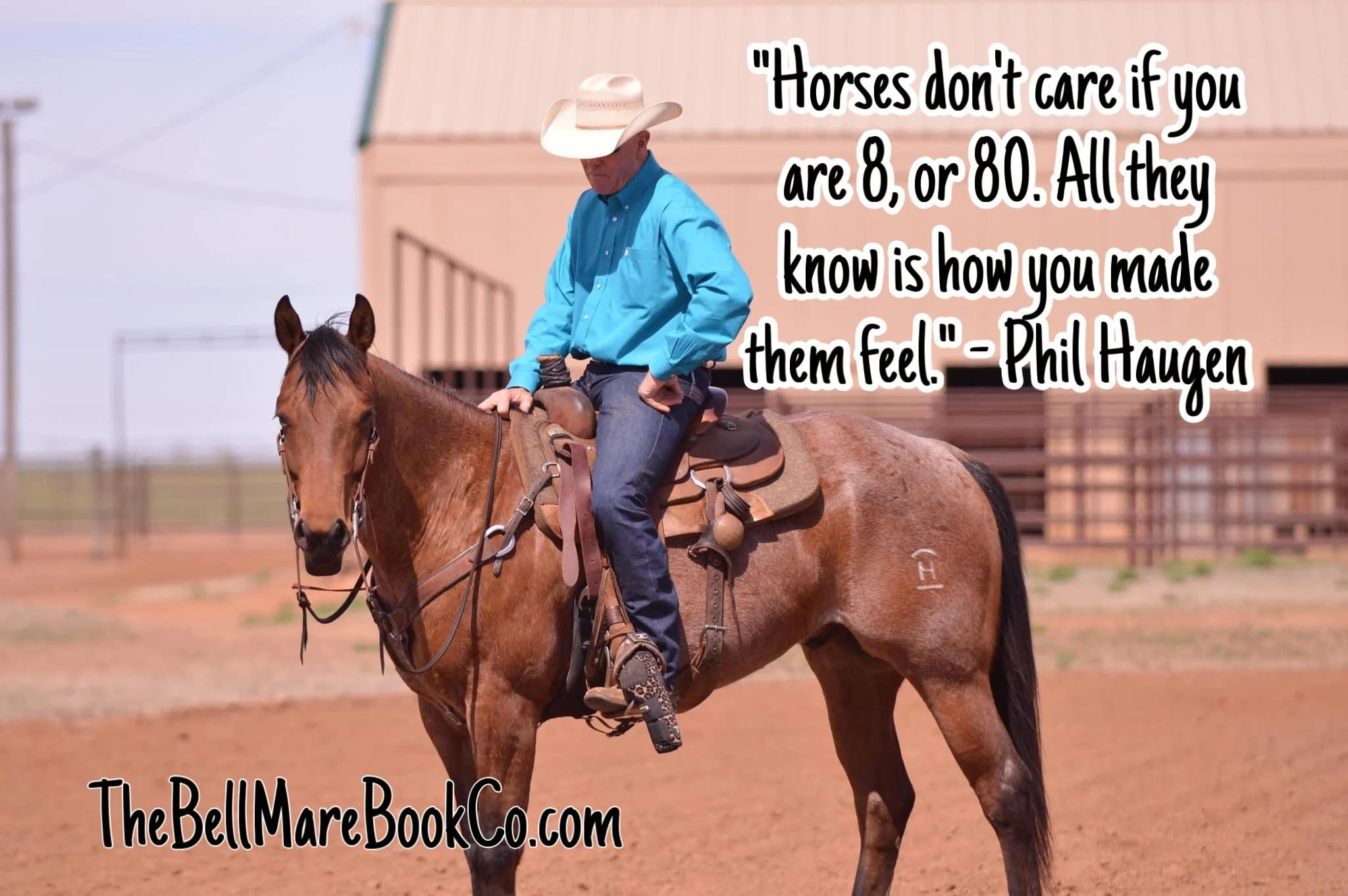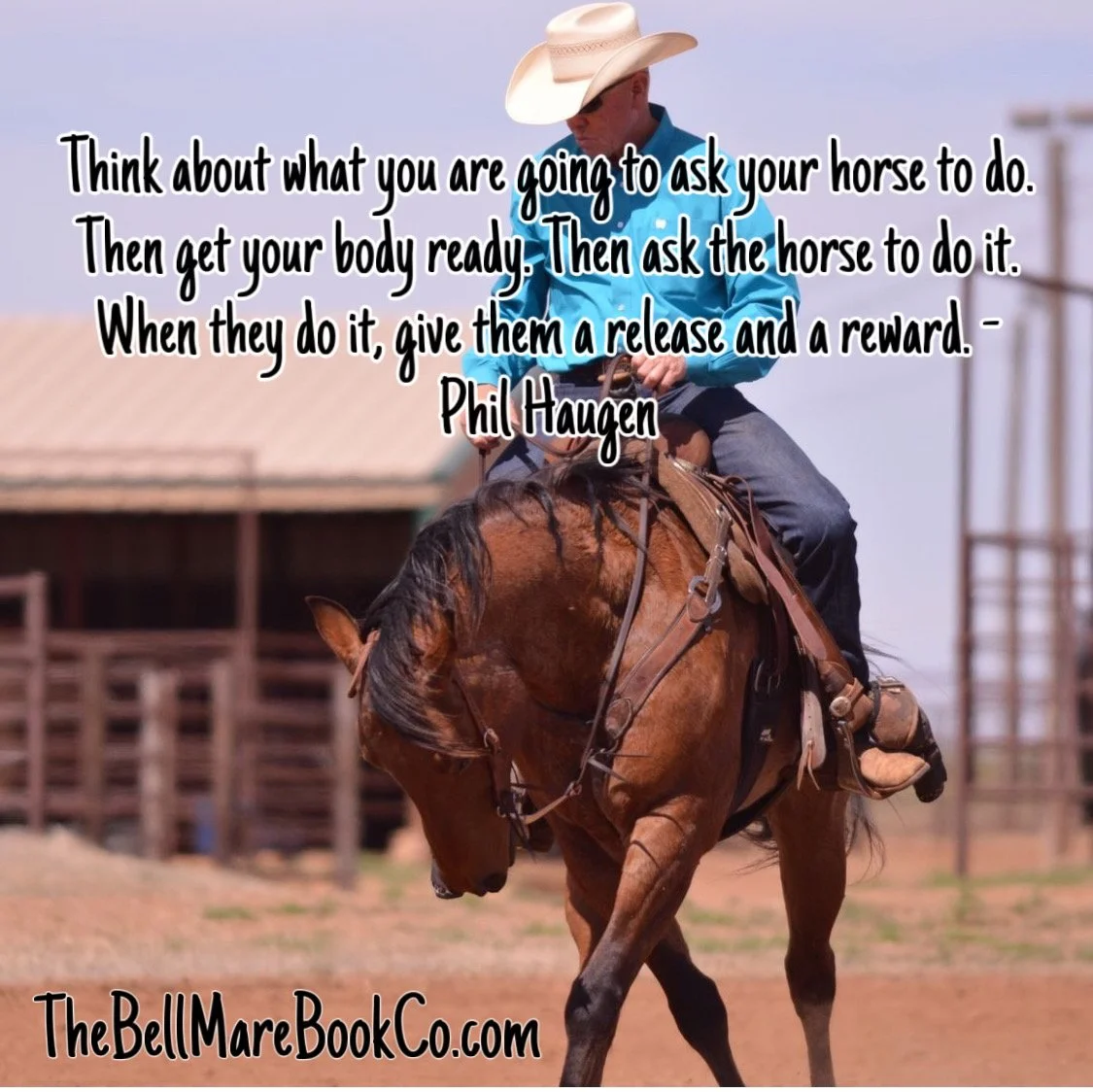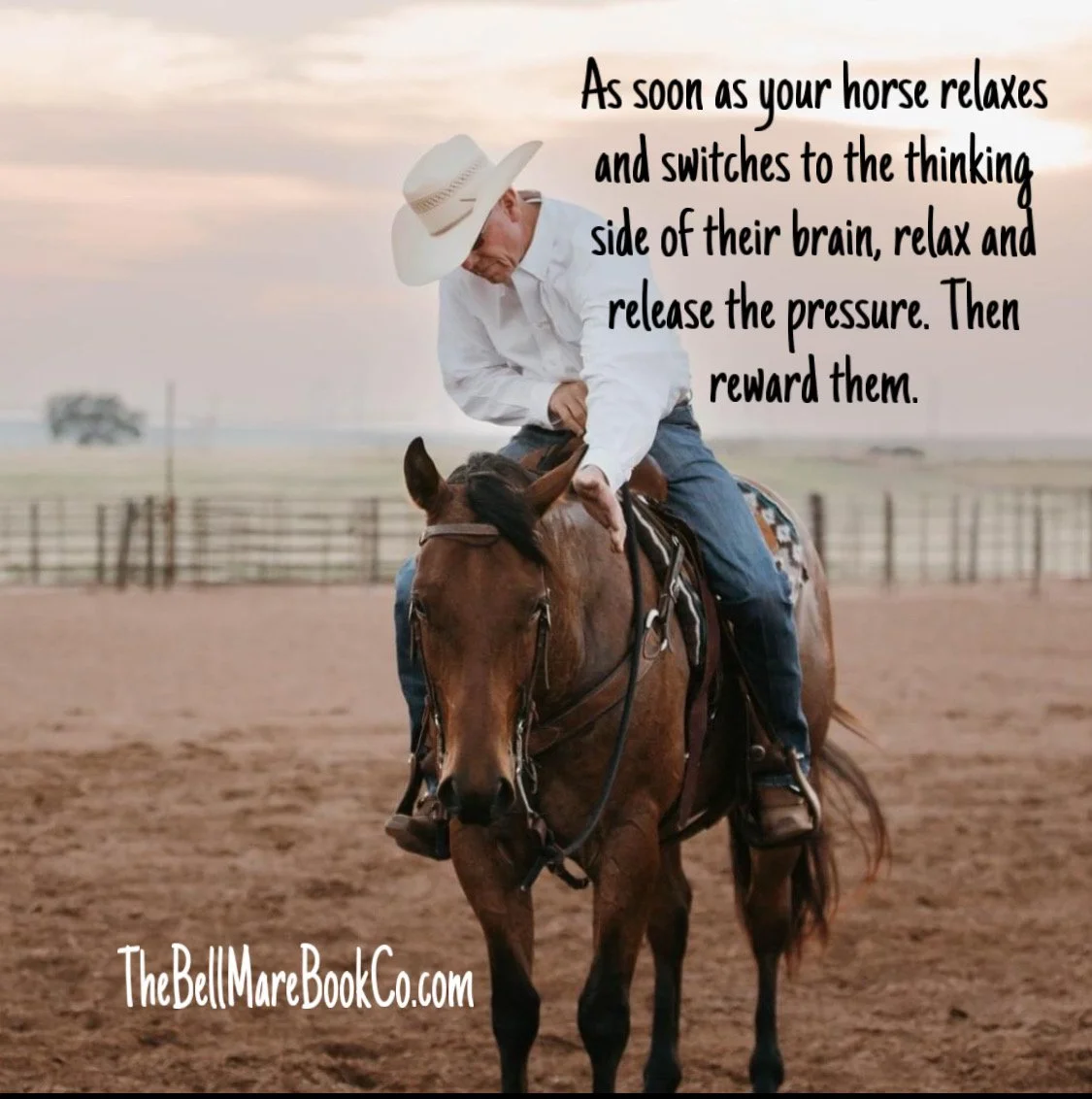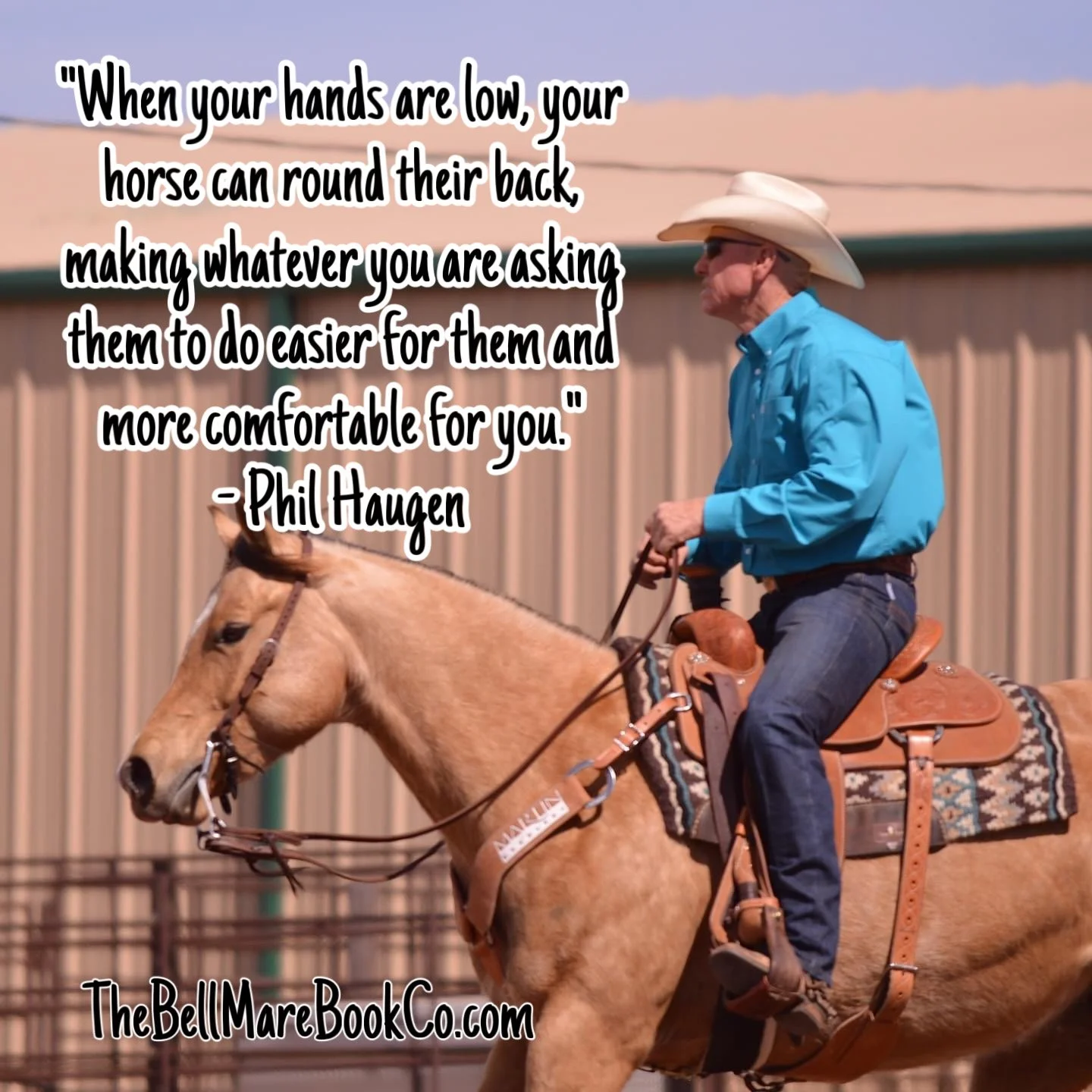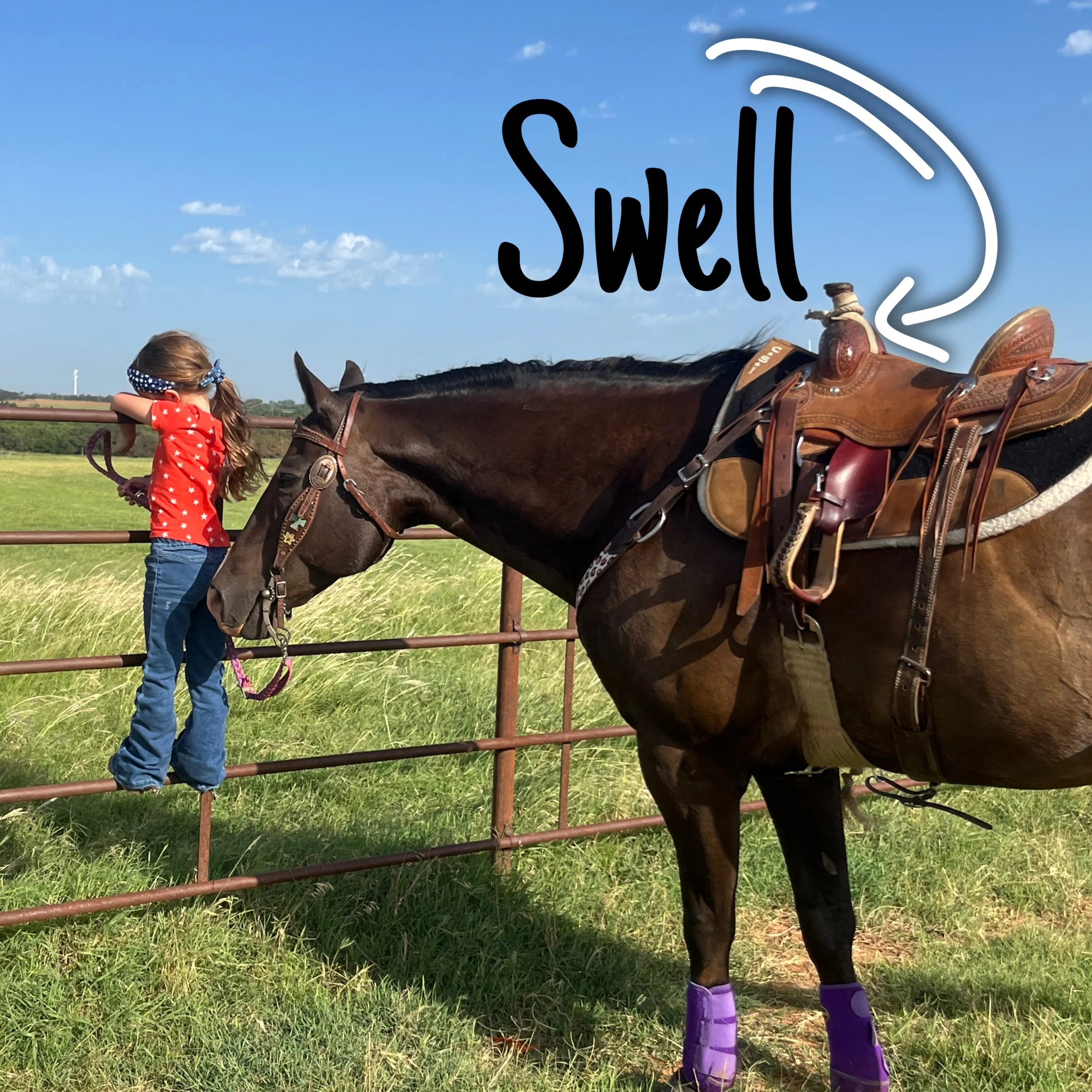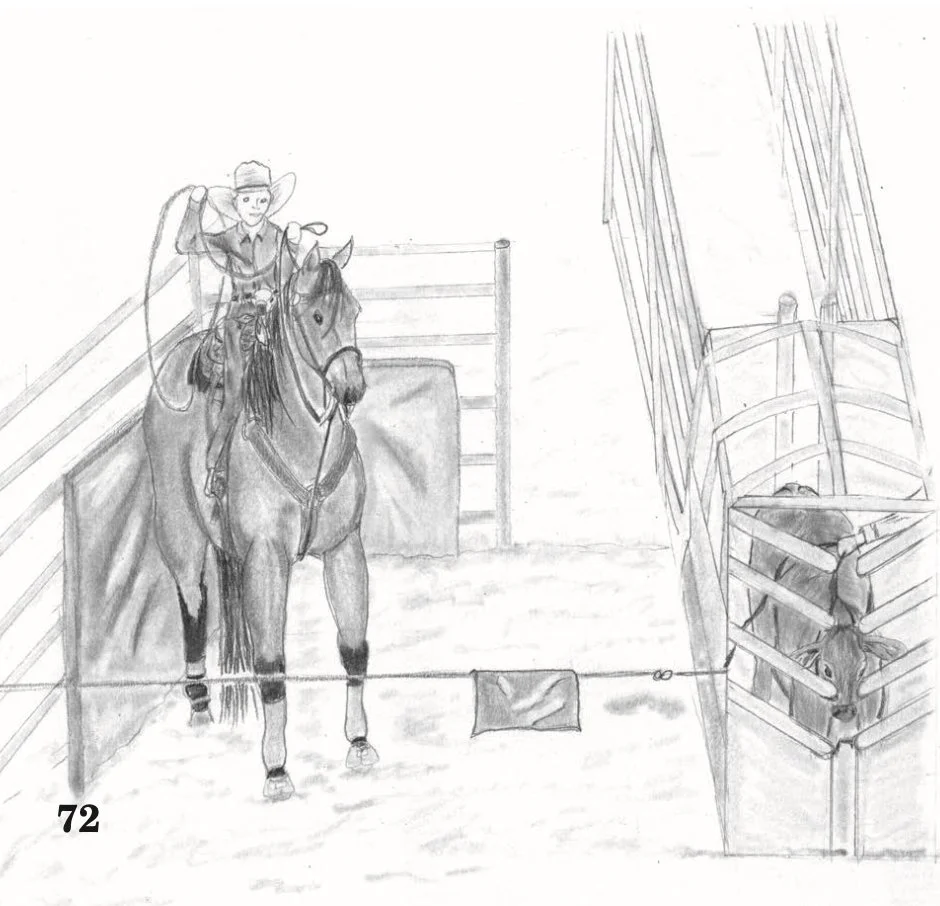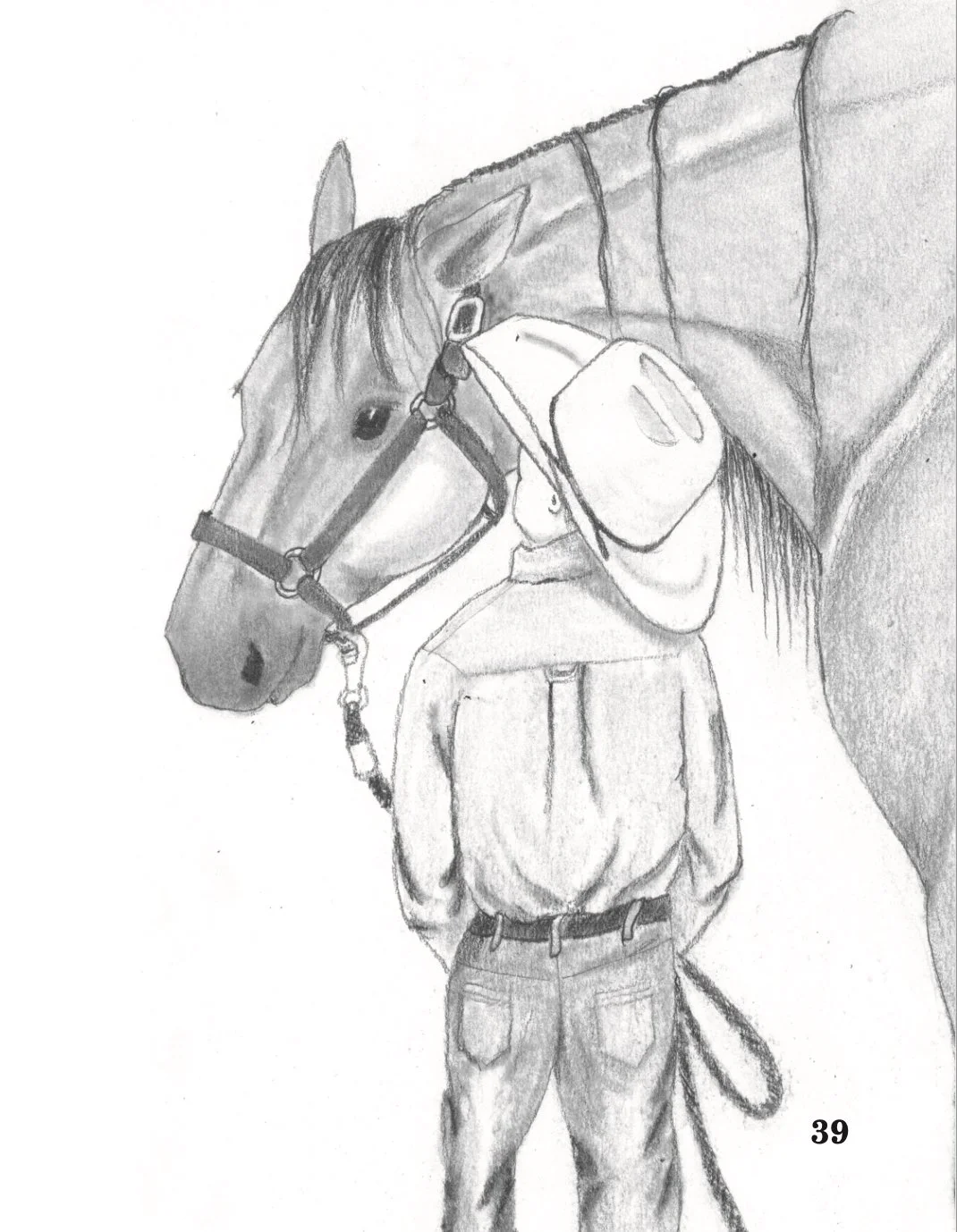Cowkids Only - August 2024
August 2024
Brought to you by The Bell Mare Book Company
Ask a Pro:
Phil Haugen
This month’s blog features professional horseman and roper Phil Haugen. Phil competed in the PRCA in calf roping, team roping and saddle bronc riding and won the Linderman Award in 1989 (see the April blog for details on the Linderman Award!). He also was inducted into the North Dakota Cowboy Hall of Fame in 2021. Phil took his rodeo experience and developed his own style of horsemanship that he has applied to more than 1,000 horses he has personally trained. Phil puts on horsemanship clinics all over the U.S. each year and keeps a barn full of horses in training. No matter which rodeo event you compete in, you will learn valuable horsemanship and life skills from Phil that will make you and your horse a better team.
Ask a Pro:
Professional Roper, Horseman and Clinician
Phil Haugen
Question: Why is horsemanship so important in the sport of rodeo?
Phil’s Answer:
Good horsemanship is what takes you from winning on occasion, to winning consistently. If you consistently work on being able to ride and communicate well with your horse, the winning will come. You still have to practice your event, but having good horsemanship will separate you from your competition.
Question: Should rodeo kids view horsemanship any differently than adults riders?
Phil’s Answer:
A horse doesn’t really care or understand the difference between an 8-year-old and an 80-year-old. All they know, is what they feel from their rider. I get kids at my clinics who are less than 10 that sometimes understand horsemanship better than adults do. I also think learning horsemanship at a young age can help rodeo kids avoid bad habits that lead to miscommunications with the horse. The word “horsemanship,” to me, just means you have clear communication with your horse and they view you as their leader because they trust you and understand what you are asking them to do. At my clinics, I teach young kids and especially older kids, the same as I do the adult riders.
Question: What recommendations do you have for rodeo kids to improve their communication with their horse?
Phil’s Answer:
Think about what you are going to ask your horse, before you ask them. For example, if you want your horse to lope down the arena and then stop, two or three strides before you pull back on the bridle reins, start thinking about stopping. Sit down deep in your saddle. Push your feet forward. Get your hips square. Then pull back on the reins. The example I use in my clinics is, if I told a kid to run as fast as they could down the arena and I said, “stop.” They would probably run a step or two past when I said stop because they didn’t know I was going to tell them to stop until the word was out of my mouth. If I told them to run down the arena and I said, “OK…stop.” They would be able to stop when I said it because they were prepared for the command that was coming. So, to boil it down really simply, think about what you are going to ask. Ask the horse to do what you want. Then give them a reward or release when they do. The reward or release means you are taking away the pressure you put on them. So, for a stop, you would think about stopping. Prepare your body for the stop. Ask them to stop. Then when they stop, you quit pulling on the bridle reins and relax your legs and pet them. That takes the pressure off and lets them know they did what you wanted them to.
Question: What are some common areas of stress for rodeo horses and how can rodeo kids help horses better handle that stress?
Phil’s Answer:
The rodeo scene is very mentally challenging for horses. So, it is really important we use dry runs, or slow work, often. If you are a barrel racer, you slow work your horse more than you ever run them. If you are a roper, you score as many or more than you rope. If you are a goat tier, you ride your horse to the spot where they can quit working and relax and you stop and pet them and take the pressure off with your reins and legs. Horses have two sides to their brain. They are either thinking and learning, or they are defending themselves. Every time we ask our horses to run, we are triggering their flight response and in their minds, they are running for their lives against a predator. It is so important that we trigger the thinking side of their brains more than the flight side, so that they are capable of listening to what we are telling them. Horses that are rearing, prancing, whinnying, bucking, etc. are trying to save their life and they are not using the thinking side of their brain. Our goal as horse trainers should be to recognize when our horse is in flight mode and help them switch to using the thinking side of their brain. Eventually, you want that change from flight mode to thinking mode to be as simple as turning on or off a light switch. You see the horse reacting, you do something to get them thinking, they switch to the thinking side of their brain and start listening to you. The hope is, that the horse gets into a habit of staying in the thinking side of their brain when you are around them.
Question: What do you recommend kids do to switch their horses from reacting to thinking?
Phil’s Answer:
Rodeo kids need to find something that makes their horse feel confident and secure. Something that works well for me to help a horse switch from being in flight mode to thinking mode is to ask them to move their feet. I do this with a simple figure 8 drill. When I feel a horse getting nervous or anxious about something, I ask them to do figure-8s. Asking a horse to move their feet and change direction, requires them to think about where they are placing their feet and what you are asking them to do. When I feel the horse relax and switch to the thinking side of their brain — meaning they are no longer nervous or worried and they are focusing on the figure 8s I am asking them to complete, then I give them a release. I stop asking them to move. I relax my body and my hands. Pet on them and let them sit and rest. If their anxiety returns, start moving their feet in a figure-8 again. And this isn’t something you do just at rodeos. In fact, if you do this exercise at home when you feel your horse get tense or unsure, it will work better when they are away from home because it will be a familiar request to them.
Horses are going to have more nerves and anxiety at rodeos because WE feel different. It’s not our fault. It’s just part of being human. One thing you can do to help, is to put yourself in pressure situations at home. For example, pretend the first calf you run every time is your rodeo run. Put pressure on yourself to make your very first run your best run every practice session. That not only helps you get better at competing under pressure, but it also helps your horse get used to those changes they feel when you are a little more tense than normal. Then they won’t be as surprised when you feel different at the rodeos.
Question: How can rodeo kids create better communication with their horse through their hand position?
Phil’s Answer:
Number 1, I encourage riders to keep their hands as low as is comfortable for them and their horse. If you raise your hands up, your shoulders lift, your hips lift and your horse drops their back out from under you. No matter whether you are turning a barrel, roping a calf, pulling a steer, the horse will be able to do it better if their back is round and their belly is lifted. They can’t get into that position when our hands our lifting high on the bridle reins.
Question: What is a common mistake you see a lot of people make when it comes to horsemanship?
Phil’s Answer:
A lot of people try to make things too complicated. It is so important to keep things simple. Work on one thing at a time. When you get better at that one thing, then move on to the next. But working on one thing at a time keeps it simple for both you and your horse and builds your confidence together. When you build confidence in your horse, you gain their trust. If they feel good about what you are asking them to do, they will learn to trust you.
We all want to get better, but success isn’t something that just happens overnight. I like to say try to get 1% better each day. If you get 1% and your horse gets 1% better every day, after 100 days, you are 100% better than you were when you started. Trying to get 100% better all at once is going to create anxiety and stress for both you and your horse because it is an unrealistic goal. I also like to say progress is like eating an elephant. You have to take one small bite at a time and really chew it up. You can’t try to eat the elephant in one big bite all at once.
Question: What is something you think all rodeo kids need to understand about horsemanship?
Phil’s Answer:
The process never stops. As soon as you think you or your horse can’t get any better, you start getting worse. And, when you learn to love the process of making your horse better, you can readjust your goals to be more within your control. For example, you can’t control, whether your steer runs straight. You can’t control whether your goat or calf takes a tie. You can’t control whether the ground is muddy or not. When you have a run where things out of your control take you out of the money, you can look at your horsemanship and find things in your control that did go well. For example, maybe you drew a breakaway calf that ducked left. If you focus on horsemanship, you can look and see, did your horse leave the box flat? Did he score well? Did your hand stay low? Did your horse stop straight? Did he stay calm and quiet? Horsemanship is something you can work on every single run no matter what other factors might influence whether you win or not. The truth of it is, your horse doesn’t understand the concept of winning. They don’t know how you placed or didn’t place in your event. All they know, is how you made them feel. If they didn’t work the way you wanted, evaluate why and fix it at home. Disciplining a horse at a rodeo only tells them, I need to be anxious and nervous when I am away from home because bad things happen. And sometimes horse training has to be a group effort. It never hurts to let a good adult horseman help bridge the barrier between the kid and horse to make sure the horse understands what they are supposed to do.
If you could get in a time machine and tell your younger self something, what would you say?
Phil’s Answer:
Relax and enjoy the great blessing you have been given to be a cowboy. Worry less about being perfect and just enjoy the process of getting better. It’s all about progress, not perfection. Trying to be perfect takes the fun out of everything.
Also, know the difference between talent and skills. Talent is something God-given. Skills are something everyone can develop. You can get by on talent, but if you work hard to develop your skills, you can’t keep the winning away. Trevor Brazile became who he is because he outworked everyone developing his skills. Never once did he think he could get by on talent alone.
Question: What is your favorite thing to read?
Phil’s Answer:
1) The Bible…every single day!
2) I also love the two personal development books titled Atomic Habits and With Winning in Mind. I have read these books at least six or seven times each and I learn something new every time. The 1% rule doesn’t just apply to my horses and horsemanship. I try and work on making myself 1% better each day too.
To learn more about horsemanship from Phil, check out his weekly podcast where he shares his thoughts on training the western performance horse.
https://philhaugenhorsemanship.com/podcast
Cowkid Devotional
By High Call Ministries Pastor Kelly Cronkhite
Kelly is not your typical pastor. He’s a Jesus-loving cowboy, rancher and roper.
Have you ever had to get a new horse before? Did you notice the more time you spent with that horse, the more comfortable you got with each other? Or, if you have been riding the same horse for a long time, do you notice how your horse can sometimes know what you are going to ask them to do before you even ask? Our horses get to know and trust us by spending time with us. The more quality time we spend with them, the more and more they look to us as their leader and trust us to keep them safe. Spending time with God works the same way for us. The more time we spend reading our Bibles, listening to sermons, singing worship songs, praying, etc., the better we get at seeing God as the leader of our life and putting our trust in His hands. I encourage you to set aside time for God every day to build a relationship with Him. Once you get into a habit of spending time with God during your scheduled time, start making it a habit to send up quick prayers throughout your day too. You can silently ask God for wisdom before you take a test. You can ask Him for safety for you and your animals before you head to the practice pen or rodeo. You can even ask Him for patience when your siblings are getting on your last nerve! The Bible tells us God delights in the details of our lives and hears our prayers. I challenge you to spend more time with God this month and watch how your faith and trust in Him grows!
“The horse is prepared for the day of battle, but the victory belongs to the Lord.”
- Proverbs 21:31
“‘Come close to God and God will come close to you.’”
- James 4:8
“‘For I know the plans I have for you,’ says the Lord. They are plans for good and not for disaster, to give you a future and a hope. In those days, when you pray, I will listen. If you look for me wholeheartedly, you will find me.”
- Jeremiah 29:11-13
“‘Never stop praying.”
- 1 Thessalonians 5:17
“‘We put our hope in the Lord. He is our help and our shield. In Him our hearts rejoice, for we trust His holy name. Let your unfailing love surround us, Lord, for our hope is in you alone.”
- Psalm 33:20-22
“You care for people and animals alike, O Lord. How precious is your unfailing love, O God!”
- Psalm 36:6-7
“‘The Lord directs the steps of the godly. He delights in every detail of their lives.”
- Psalm 37:23
Horse Care Tip of the Month
By Equine Veterinarian Zach Bruggen
Staying in Shape!
Dr. Bruggen shares his advice on keeping horses in shape as school starts back up and fall approaches.
There are two types of exercise for horses:
Aerobic: This would include walking, trotting and slow loping.
Anaerobic: This would include most rodeo events that involve running, turning and/or pulling. It also includes trotting and loping when the horse is going uphill or is in very deep ground.
For rodeo horses, it is important to have a balance of the two types of exercise to keep your horse in shape. For example, you can’t take your barrel and pole horse on a 15-min walk around the pasture during the week and expect them to be able to run a barrel and pole pattern on the weekend. But, there is a balance. You also can’t sprint that horse every time you get on them either.
In my opinion, a good rule of thumb is to use a wide variety of exercise to keep your horse sound, sane and in shape. If you do multiple events on your horse, work them on different events throughout the week. Rope calves on them one night, tie goats on them one night, then spend a couple other nights just loping circles or riding them out in the pasture. This gives them a balance of anaerobic — roping and tying goats — and aerobic — general riding in the arena and/or pasture.
Rodeo horses need at least 30 minutes of exercise 3 to 4 days per week. This is especially true if the horse is kept in a stall or small pen where they can’t exercise themselves. If they do not receive this amount of exercise, they will be more likely to get injured.
No matter what kind of exercise you have planned for the day, a proper warm-up —10 to 15 minutes of walking and slow trotting — and a proper cool-down —15 minutes of walking — is really important to keep your horse from getting injured and/or sore.
If your horse is not in shape or has had time off, bring them back to exercise slowly. Spend 2 to 3 weeks riding them aerobically — walk, trot, slow lope — with very small periods of anaerobic exercise — one time cruising through the poles to check their fitness level, or trot or lope them up a hill a few times. If the horse is breathing hard or excessively sweating, you are asking too much of them.
If you aren’t sure what your horse’s fitness level is and what kind of exercise is best for them, call your veterinarian! Most veterinarians are happy to help horse owners who want to do what is best for their horses.
Exercise of the Month:
Hip Flexor Triangle
By Logan Corbett with Champion Living Fitness
Hip flexors are a small muscle with a big responsibility. Your hip flexors run along the front of your hip bones and help you walk, run, ride and even sit-down and stand-up. Sometimes those hip flexor muscles can get weak or tight — especially if you are doing a lot of sitting during the school day. The hip flexor triangle exercise is a great way to strengthen those muscles. Strengthening your hip flexors will help you use your legs more efficiently, improve your balance and help protect you from injuries. Check out the video below to see how to do a hip flexor triangle. Remember, when it comes to exercise, a little bit every day can make a big difference!
Rodeo Word of the Month:
Rodeo Math Problem of the Month:
Dummy Roping
Max and his friends are competing in dummy roping at their junior rodeos. If the dummy roper catches with all five of their loops, they get a 10-point bonus. Max caught five times from the five-point line. Rhett caught four times from the three-point line. Ramsey caught four times from the seven-point line. And, Claynee caught five times from the three-point line. Who won the dummy roping? (Don’t forget to add 10-points to the score if the roper caught with all five loops!)
Reading Comprehension:
Rodeo Horse Rehab
Max’s horse, Short Go, strained a tendon in his left front leg. The family’s veterinarian wrote out instructions for helping to rehabilitate, or heal, him. This is what the vet’s notes said:
Keep him in a small pen or stall for 2 weeks.
Give Short Go bute (a medication that reduces swelling and pain for horses) the first three days. He needs 2 grams once a day.
After three days, switch Short Go from bute to Equioxx (a different medication that reduces pain and swelling for horses) for the remainder of the two weeks.
If he is not significantly better after one week, bring him back in for further evaluation.
Regardless of his progress, bring him back after the two weeks is up and before you start riding him again.
Test Your Comprehension!
How much bute is Short Go supposed to get?
Can Short Go be turned out in the pasture?
When does Short Go have to go back to the vet for anther check-up?


